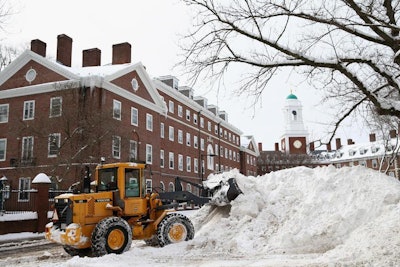From raging forest fires on the West Coast to heavy snowfall on the East Coast and bone-chilling cold between, extreme and unpredicted weather patterns this school year have disrupted college classes and tested campus infrastructures.
America’s massive underground facilities network — thousands of miles of cold water and steam pipes and countless energy turbines and air-conditioning and ventilation systems – in spite of relatively few examples, has held up well.
New and proactive approaches to facility operations, marked on many campuses by the disappearance of familiar clouds of steam billowing from grates on campus grounds, sidewalks and streets, help explain why there have not been more instances of weather-related closures.
Maryland’s Bowie State University, with a mix of older and new buildings, “has been able to take a proactive approach to infrastructure maintenance to minimize the risk of system-wide failures,” said Darryl Williford, the school’s director of facilities management, echoing peers at universities elsewhere in the nation.
“We have been doing systematic boiler replacement for several years. We upgrade control panels on heating and cooling systems as part of an energy performance program, resulting in better temperature regulation in buildings,” said Williford.
Bowie, a state-controlled institution, has invested millions of dollars in recent years into an ongoing program of facilities upgrading and maintenance, added Williford.
In Ohio, where The Ohio State University’s main campus in Columbus has an underground system built to deliver water, heat and cool air to its 140 buildings, university officials tout a nearly 100-percent successful performance rating of its system, which in an average winter week can generate 500,000 pounds of steam an hour from its natural gas-fired boilers.















